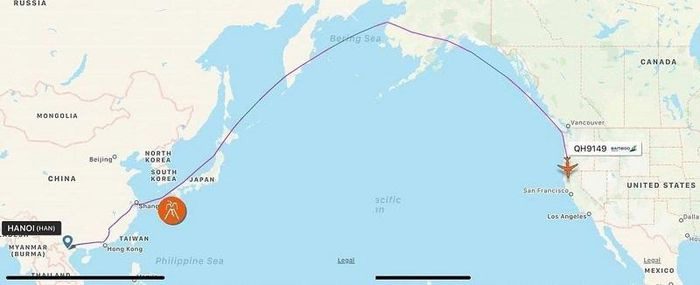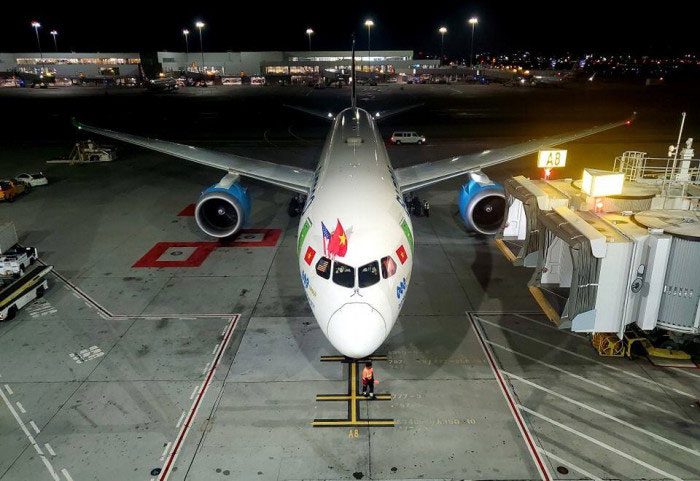The image depicting the “zigzag” flight path of the Boeing 787-9 named ‘Quy Nhơn City’ from Bamboo Airways, which took off from Hanoi to San Francisco (USA), was shared by the Chairman of FLC Group, Trịnh Văn Quyết, on social media, sparking a debate.

The flight path of “Quy Nhơn City” shared by FLC Chairman Trịnh Văn Quyết.
After 13 hours and 34 minutes of flying, Bamboo Airways’ Boeing 787-9 named “Quy Nhơn City” safely landed in San Francisco (USA), successfully completing the non-stop flight between Vietnam and the USA. Notably, the flight path image revealed that although it was a “direct flight,” the aircraft did not fly in a straight line across the Pacific Ocean but instead followed a curved route, passing through several other countries. This immediately sparked a discussion on social media on September 24, the day Bamboo Airways successfully conducted its first direct flight.
In reality, this is also a question that many passengers wonder about when they first learn that flights between Asia and America tend to avoid a straight path across the Pacific. Even when flying from the USA to Japan or South Korea, planes often fly up towards Alaska rather than taking this route.
The response from aviation experts was quite surprising. The truth is that crossing the Pacific Ocean is not a straight line as we see on a map, because the Earth is a sphere, not a flat surface.
Flight planners choose the shortest and most economical routes based on various criteria.

The truth is that crossing the Pacific Ocean is not a straight line as we perceive.
Among these criteria, flight routes must be designed to ensure that the aircraft can communicate with ground radio stations and be prepared for rescue capabilities in case of emergencies.
If an aircraft encounters issues while flying over the Pacific Ocean, there are no airports available for emergency landings. Furthermore, weather conditions over the ocean tend to be less stable compared to land.
In contrast, if flying along a curved route, pilots can make emergency landings at the nearest airport in case of engine trouble or adverse weather conditions.
It is known that before the Quy Nhơn City aircraft undertook the aforementioned flight, Bamboo Airways had signed a four-party cooperation agreement involving: the City of Los Angeles (USA), the Los Angeles Tourism and Events Board (LATCB), Los Angeles International Airport, and Bamboo Airways, to develop a non-stop flight route from Vietnam to Los Angeles. It is expected that in October 2021, Bamboo Airways will launch a non-stop flight connecting Ho Chi Minh City with Los Angeles – the capital of California, which is home to many Vietnamese expatriates living in the USA.
On the day Bamboo Airways successfully conducted its direct flight to the USA (September 24), the stock price of FLC Group Joint Stock Company (the parent company of Bamboo Airways) increased by 1.3% to 11,450 VND per share. The stock of FLC Faros Joint Stock Company also rose by 2%, closing the session at 5,610 VND per share.




















































